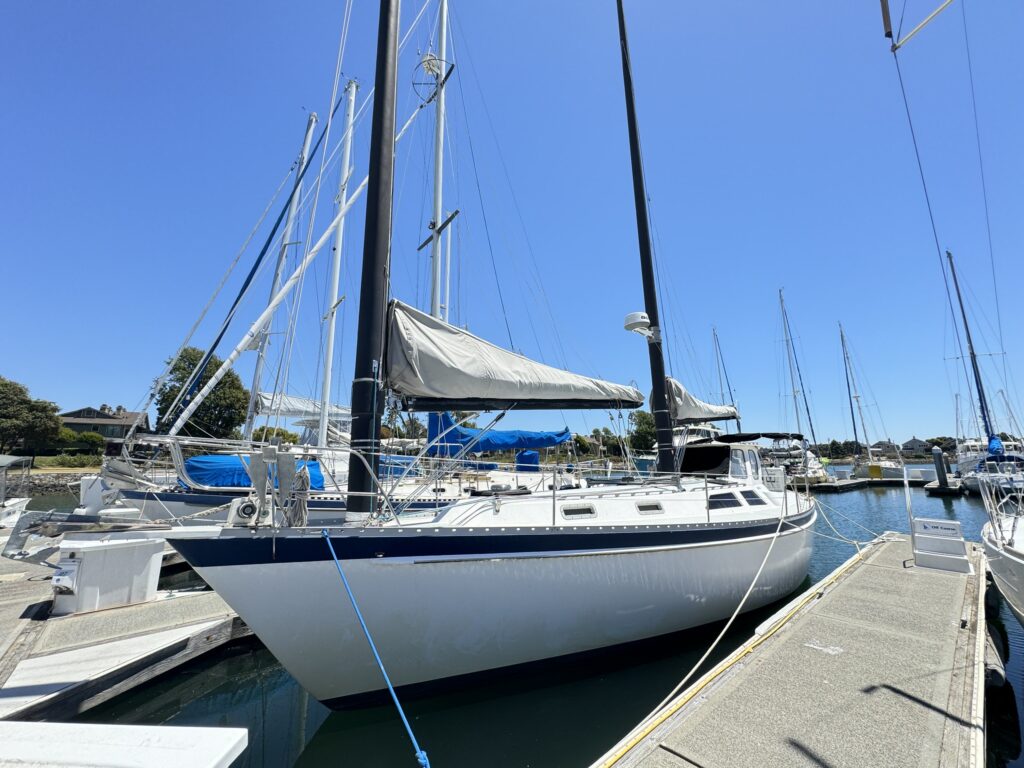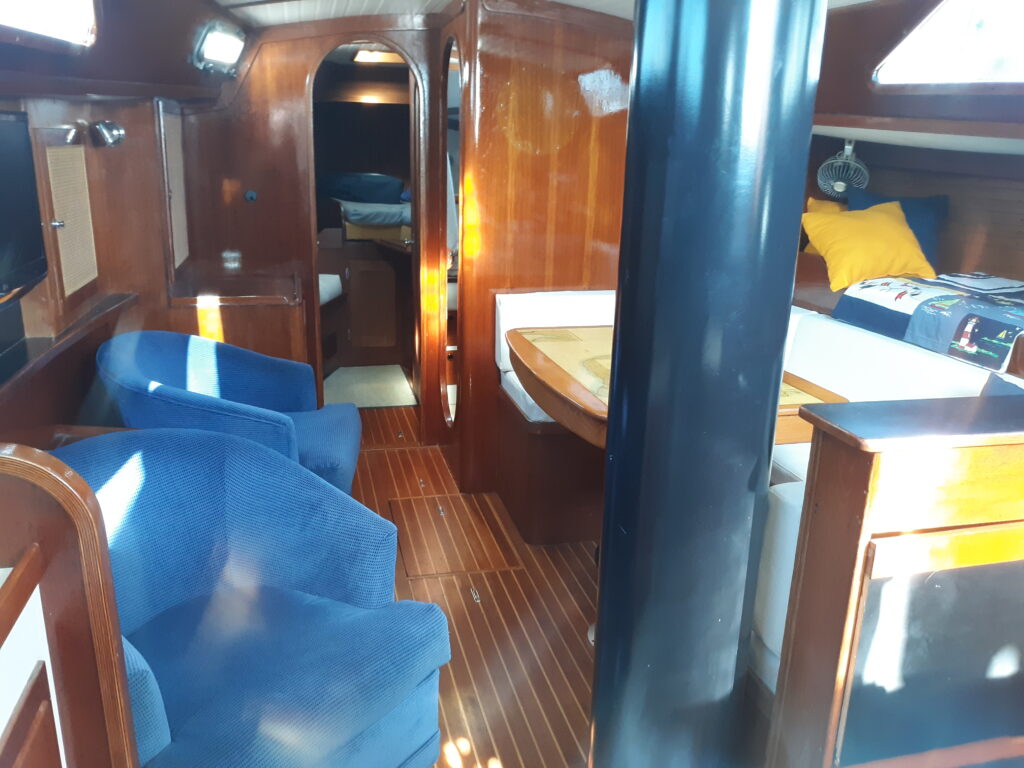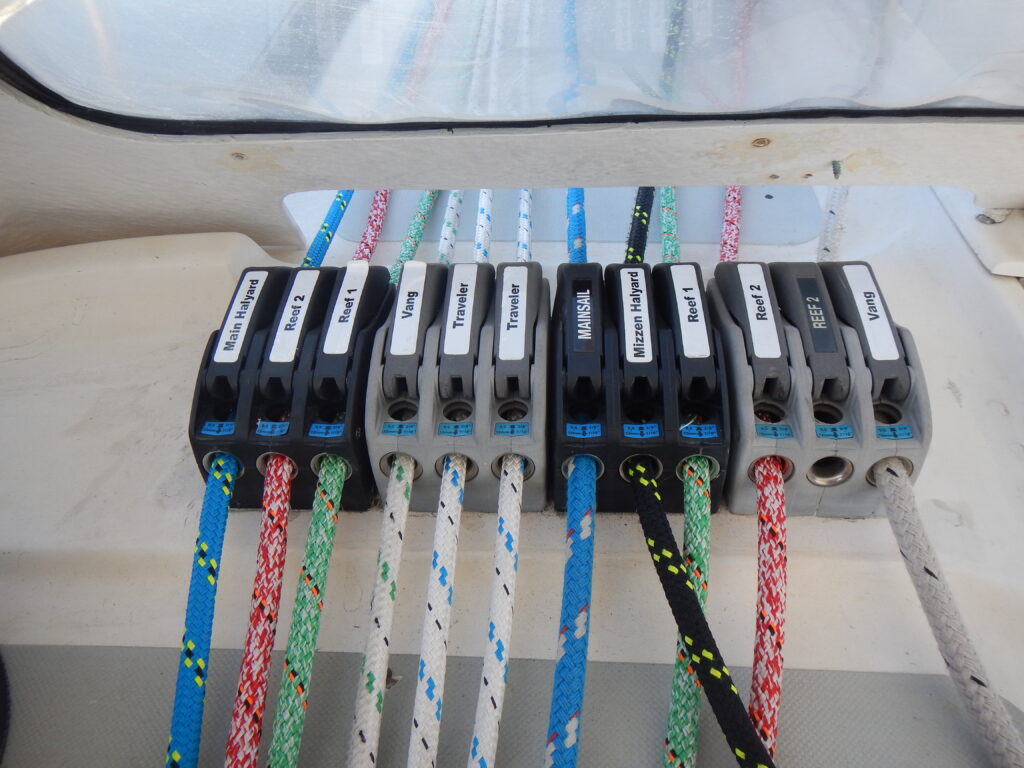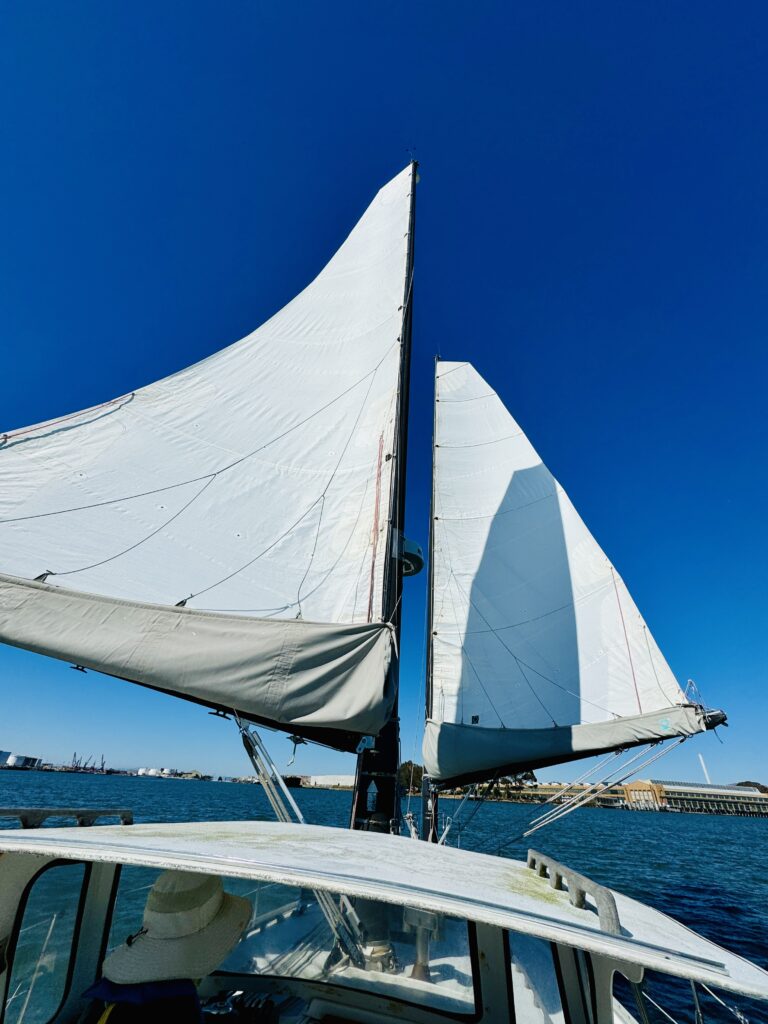Since Odyssey joined the Fleet, I immediately thought: “Nope! That’s just too much boat for me.” From the multiple masts and lack of jib, to the sturdy dodger and the slew of lines in the cockpit, it seemed beyond my capacity. On top of that, I had heard and seen a few instances where getting into the slip was a challenge. Naturally, because that’s how the universe works, I found myself on the schedule to teach its next checkout. So, I reached out to the owner and fellow instructor, Carlos, for a private checkout of my own. And, let me tell you, it was nothing like I anticipated and a truly wonderful sailing experience.
To start, we walked through the checkout sheet together. If you haven’t been below on this 1986 Freedom 39, she is beautifully outfitted with swivel chairs, spacious berths, and a roomie banquet/table. And the engine compartment has easy access from the galley and aft locker.
Once the checkout was complete, I could feel my nerves increase knowing that our slip departure was imminent. With some great tips from Carlos, however, I took us out. Similar to most boats in our fleet in a downwind slip with wind from the southwest — starting on the starboard stern, we worked our way around the boat and cast off our lines, taking the forward spring line to the bow to keep us centered in the slip, and stared out. Now, you might be asking yourself the same question I had which is: “If you start your turn when the mast clears the end of the slip, what do you when you have TWO masts?” Well, the answer is: between them. In fact, a good indicator on the boat is the traveler for the main mast (the forward mast). The traveller for the mizzen mast (aft mast) is when the mainsheet just behind the helm. One important thing to note is that Odyssey is heavy and doesn’t respond quickly under power, so having a little extra throttle to come out of the slip is key. As you clear midships and turn the wheel full to port, you might feel as though she won’t turn. Be patient. She will. And she did!
And now for the best part, the whole reason we all sail…the sailing part! Each sail has two reefs, a halyard, vangs, and a sheet. Pretty standard. So, we approached windy corner and started hoisting. Order of operations? Main first, then mizzen (reverse to drop sails). Now, here is the only slightly challenging part of the charter. It’s a lot of sail and you have to be careful not to get the battens stuck in the lazy jacks as you hoist. However, once they are up and you set them, you get to sit back, relax, and enjoy everyone you pass looking at your vessel in awe. The best part? Tacking is SO EASY! You never have a jib to contend with. And, when it comes to being on a run, with no shrouds, you can easily set yourself wing on wing.
Coming back in was what I had feared the most. As it turns out, it was just like any other docking experience I’ve had. Pro tip: if you need a little help getting the stern to port to line yourself up better coming in, give it a little kick in reverse and the prop will set you up for a perfect landing.
All in all, my experience was nothing like I had anticipated. It was a lot of fun, way easier than I had imagined, and not scary at all. I highly recommend you do a checkout on Odyssey and enjoy this stunning cat-rigged ketch.




